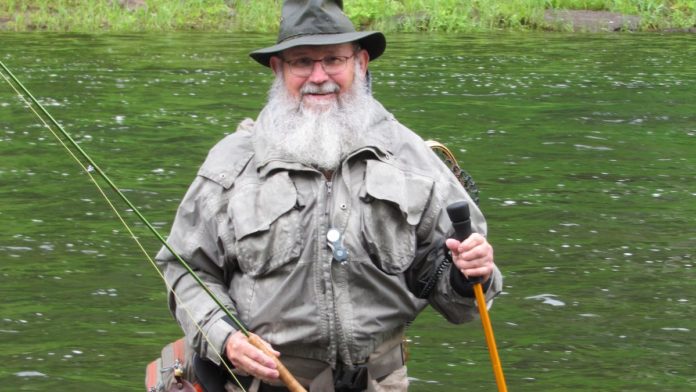Fly fishing began in ancient Macedonia several centuries ago, at least as far as documented records indicate. The sport has evolved into its own subculture of participants around the world since and into the 21st century.
Today, fly fishing and its related endeavor of fly tying are multi-million-dollar a year industries in regard to specialized equipment, supplies, materials, consumer shows, destination travel and more.
Despite this modernization, the overall concept has remained essentially the same: crafting a fraudulent hooked imitation of a real fish food source consisting of natural and now synthetic materials and casting it to aquatic fish species that range from sharks to bluegills and virtually every other species in between that swims.
With aquatic insects emerging and water levels stabilizing, spring and summer are optimal seasons to cast a fly anywhere. Pennsylvania has long been a fly fishing Mecca given its many miles of fish-filled flowing and still waters. The commonwealth has had — and still does have — enough high quality water that produces significant aquatic food sources for fly fishers to imitate.
Locally, located in northern Somerset County, Clear Shade Creek has one of the state’s original catch-and-release fly-fishing-only special regulation areas.
In addition, Laurel Hill Creek boasts two popular artificial lures delayed harvest sections that popular with fly rod anglers. The county also offers many more miles of not only stocked trout water, but waterways with an abundance of wild naturally reproducing trout and bass that many destination fly rodders search out.
The types of resources and the angling opportunities they provide have generated some of the most notable and legendary fly anglers in the history of the sport. Famous fly anglers such as Vince Marinaro, Charles Fox, George Harvey, Joe Humphreys and countless others have achieved cult-like status not only in the Keystone State, but around the world. That legacy has been preserved and is now on display through the Pennsylvania Fly Fishing Museum Association at the Pennsylvania Fly Fishing Museum located just outside of Carlisle.
Another organization, the Pennsylvania Fly Fishing Association, aka PFA, is a 501(c)3 nonprofit that is carrying on the tradition of the sport and, perhaps more importantly, working to continue it on into the future.
“The PFA was organized to promote and advance fly fishing around the state,” founding member Tom Hoffmaster said. “To do that we focus much of our effort and attention on youth-oriented programs aimed at bringing new anglers into the sport.”
With so many other competing indoor and outdoor options available today, Hoffmaster’s goal can be a challenge. COVID-19, of course, also impacted those efforts in the past year. The PFA is now beginning to pick up where it left off with the Boy Scouts of America.
PFA president and Scout leader Steve Kralik has organized programs with Boy Scouts in Perry County and has enabled scouts to earn a merit badge in fly fishing.
“We will expand our efforts from this base effort in Perry County to many other locations and scout troops in the state. That will provide the PFA with a platform to expand our youth education in additional directions,” Kralik said.
The PFA has also expanded those efforts by providing fly fishing equipment to school fly fishing clubs and has partnered with the Pennsylvania Fish and Boat Commission in angling education programs around the state.
“The PFA is a membership driven organization with the dues going toward the support of the programs of outreach to youth, families and beginners so that they have an opportunity to experience the fun, pleasure and challenges that fly fishing provides,” Hoffmaster said.
Memberships are available to individuals, families, nonprofits and businesses, and there is a discounted youth membership available. To learn more about the PFA and its mission, visit paflyfishingassoc.com.
Credit: Source link































